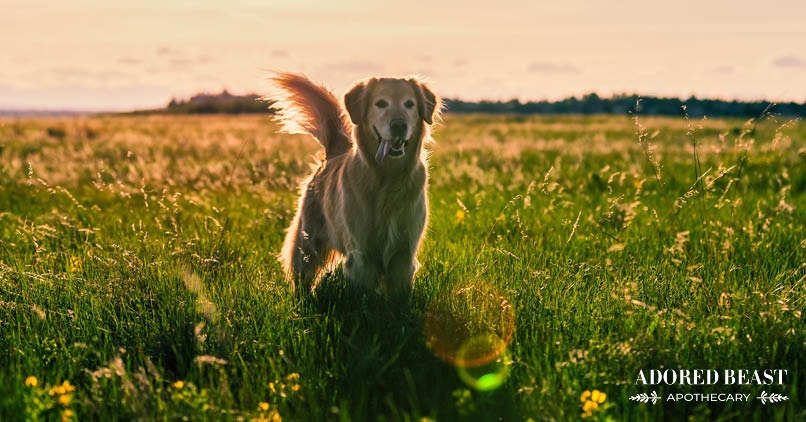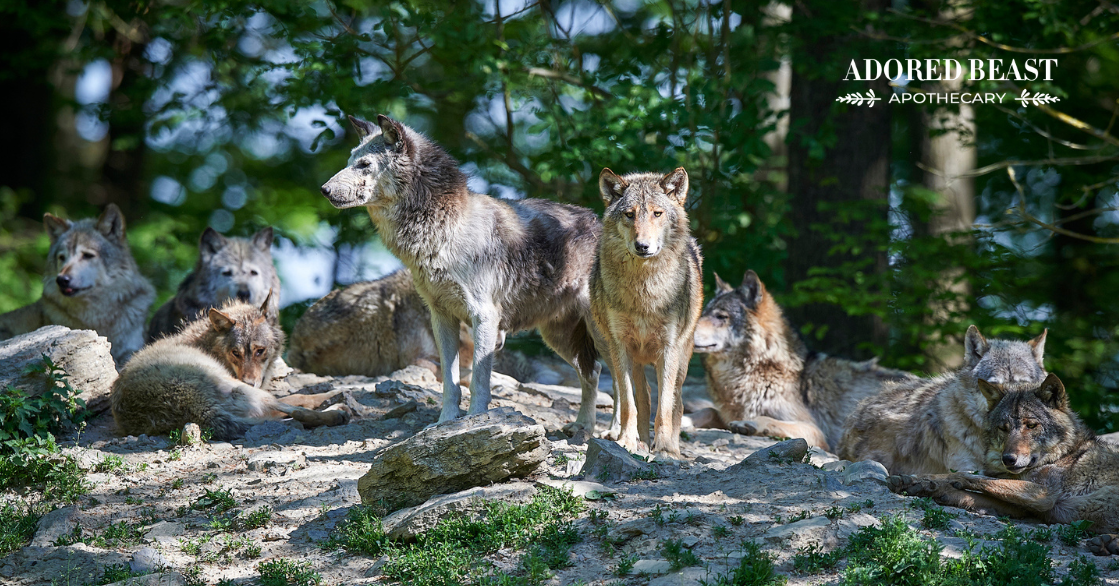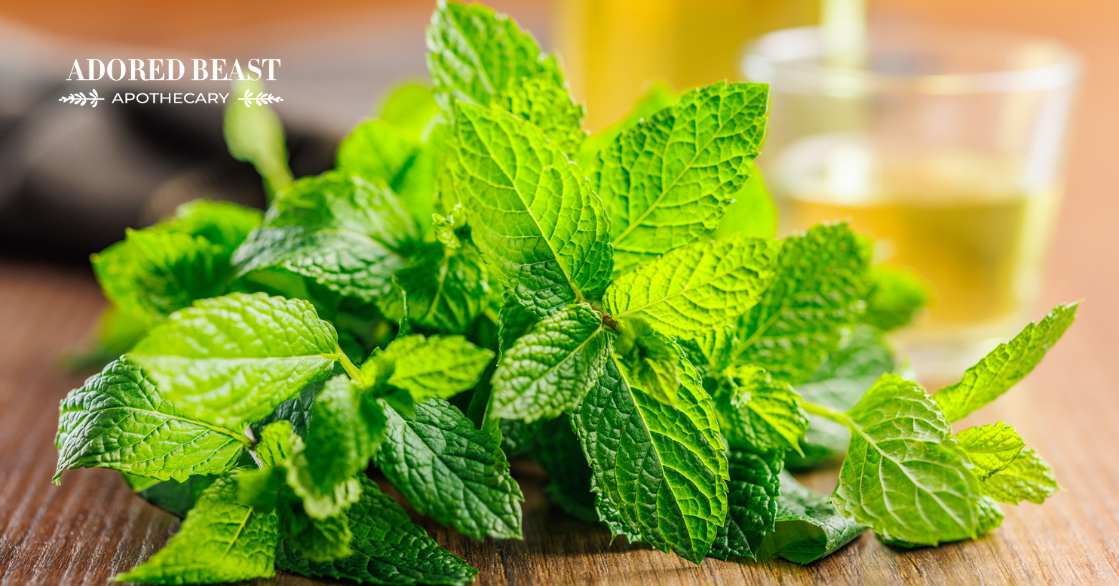Holistic herbalism believes plants have an energetic signature. Knowing an herb’s energetics plays a beneficial role in any successful herbal regimen. Dogs also have unique energetic signatures they’re prone to and express.
Energetics affect all living things – plants, animals and humans. Holistic herbalism focuses more on the individual than the ailment. Learning about the individual through the system of energetics increases healing and cure outcomes.
Avoiding extreme levels of heat and cold is a goal of canine energetics as thermal imbalances cause a domino effect. Everything is connected. Balanced energetics keep your dog’s health at an optimal level, increasing disease prevention.
Changing Canine Energetics
When warm and cool become hot and cold, it taxes elimination, assimilation, and immune response. Healing and health stasis decline. If you keep your dog in a healthy range of warm or cool, balance is easily maintained, especially at a cellular level.
Hot and cold create the perfect environment for disease, including cancer. These extremes make your dog more sensitive, increase or decrease moisture levels, degrade tissues, and deplete immune and organ function.
Dogs are born with a basic energetic of warm, cool, or neutral. Flea and tick meds, antibiotics, vaccines, kibble, treats, food, supplements, essential oils, and herbs can move your dog’s energetics up and down the scale. For example, feeding pork (cold meat) to a naturally cool dog can make them move toward cold if fed consistently.
The body works towards balance through assimilation and elimination. Knowing your dog’s energetics and the energetics of their food and supplements can go a long way in keeping your dog in a healthy range between cool and warm.
Googling or asking professionals, “what herb is good for this?” and “what herb is good for that?” is allopathic herbalism free of individuality. Holistic herbalism asks what herb or food is good for my individual dog with their distinct energy patterns. For example, three dogs with osteoarthritis might have success with three different herbal combinations. Herbs and foods aren’t “one size fits all.” What works for one dog won’t necessarily work for another.
This framework provides a simple understanding for effectively pairing herbs and foods to the individual. For example, your warm dog has chronic stomach upset and excessively pants especially in hot, humid weather. Your friend suggests ginger, it worked well for her dog. Ginger is hot and wouldn’t be energetically appropriate for your already warm and panting pup.
Energetics can help you be more precise in choosing supplements for your individual dog. Purchasing products based on energetics helps avoid “kitchen sinking.” For example, you hear about the latest herbal arthritis supplement. Wait. Is it good for your dog? You can check the formula and see if it’s more warming or cooling by looking at the ingredients.
Warm to Hot
Excessive heat moves upwards and outwards. It stimulates, increases activity, and causes tissue inflammation. Heat increases metabolic wastes and causes stagnation. Organ function decreases as demand increases. Metabolic processes are moving too quickly and the body (especially the liver) can’t keep up.
In the general lists below, your dog won’t have every co-factor. See how many they have within the list. Remember, we’re talking about a quality, not temperature. For example, cold as a quality results from an internal cold and lack of warmth in your dog’s core.
If your dog’s energetics aren’t immediately clear, spend some time observing them. Over the past twenty years I’ve only worked with a handful of truly neutral dogs. Observation can go a long way in figuring out what works and what doesn’t. Many common issues with food and supplements can be avoided with basic energetic matching.
Warm Co-Factors
- won’t sleep covered up
- seeking out cold places
- warm ears and paws
- excessive panting
- difficulty maintaining body temperature
- in your face behavior
- anxiety and restlessness
Hot Co-Factors
- panting year-round
- excessive barking
- yellow discharge from eyes
- loose stool
- red gums and tongue
- food sensitivities
- acid reflux
- high metabolism
- systemic inflammation
- hot spots
Examples of cooling herbs for warm to hot dogs:
- Dandelion root (cool and drying)
- Yarrow ( cold and drying)
- Chickweed (cool and moist)
- Marshmallow Root (cool and moist)
- Peach Leaf (cool and moist)
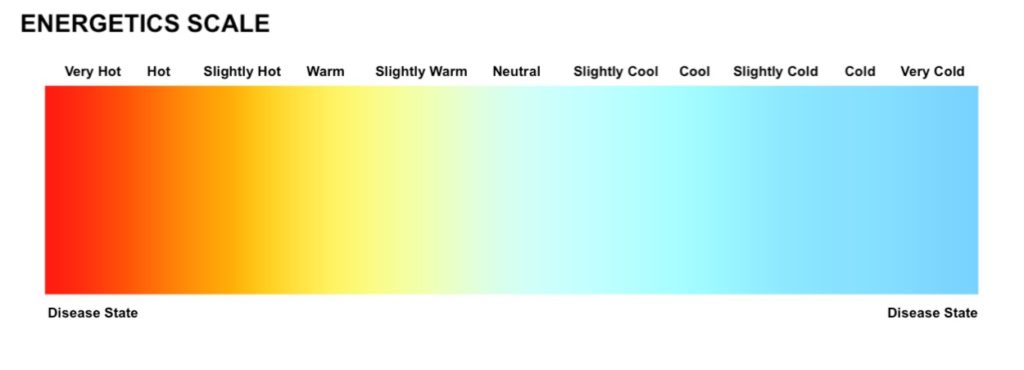
Cool to Cold
Cold moves down and inward toward the body’s core. It contracts, restricts, and slows metabolism, creating stagnation. While too much warmth has roots in excess and heat, cold has its roots in deficiency, including decreased nutrient absorption and waste elimination. Energy slows down from a lack of heat and the vital force diminishes.
Cool Co-Factors
- likes to be covered up
- cooler skin
- seeks warm places
- lethargy
- quiet and shy
- cold head and paws
Cold Co-Factors
- prone to bacteria and pathogens
- depressed organ function
- yeast prone
- chronic constipation
- lack of vitality
- white or clear discharges
- poor appetite
- lack of thirst
- undigested food in stool
- inability to deal with stress
- poor circulation
- malabsorption
- dull fur
Examples of warming herbs for cool to cold dogs:
- Calendula (warming and slightly drying)
- Rosemary (warm and drying)
- Turmeric (hot and slightly drying)
- Ashwaganda (warm and moistening)
- Ginger (hot and moistening)
Chronic and Acute Disease & Canine Energetics
Chronic disease often requires lengthly herbal and homeopathic protocols. Knowing basic canine energetics can help you choose appropriate proteins, vegetables, herbs, and remedies. Incompatible herbs risk your dog’s energetic state being pushed deeper into the hot or cold spectrum. Hot and cold are disease states. Working with your dog as an individual helps bring about balance, preventing future disease.
Acute symptoms (lasting less than two weeks) can manifest as either warm or cool, hot or cold, even though the root energetics are different. The general rule for acute conditions is to treat the acute condition first. For example, if your cool dog had a fever, you’d cool them down first, let them recover and go back to warming their core.
Layers of Energetics
Working with canine energetics is much more complicated than just warm and cool. Your dog needs balanced moisture levels. Along the same spectrum as warm and cool, dogs can be too dry or damp. Too much moisture or not enough can slow waste elimination and nutrient assimilation. Many water and fat soluble hormones can’t be processed without proper moisture levels.
Dryness
The lack of moisture cracks, it roughens, it dries out and it slows things down. You’re looking at the quality of moisture examining moisture quality. Here we are lacking moisture in the form of water, fats and oils. What balanced looks like varies from dog to dog.
Moisture is important because it affects every cellular process. Oils are crucial in maintaining balance because they nourish and transport nutrition. Each cell has a fat layer helping excrete toxins, communicate with other cells, and absorb nutrients. Without proper moisture, cells dry up and lose efficiency. This causes a cascading effect on the entire dog-as-ecosystem because without water, fats, and oils, vitamins can’t be absorbed or transported. Energy is lost. Stagnation sets in.
Dryness can have a heat component. Heat slows down circulating fluids. As a result, dogs can be both hot and dry.
It’s important to figure out dryness and heat because bodily fluids are cooling, and without circulating blood and lymph, heat increases.
Dryness Co-Factors
- weakness
- nutrient deficiency
- dandruff
- dermal crusts
- dry coat, nails, paw pads, elbows
- dry nose (not pharmaceutical related)
- itchy skin
- sensitive skin
- conjunctivitis
- tendency towards allergies
- excessive thirst
- chronic constipation
- dry stool
- dry eyes
- arthritis with stiffness or cracking
- nervousness and anxiety
Examples of Herbs For Dryness:
- Marshmallow Root (cool and moist)
- Astragalus (warm and moist)
- Licorice (neutral and moist)
- Red Clover (cool and moist)
- Plantain (cool and moist)
All of the above herbs are cooling and add moisture. Moisture balances dryness, but balanced moisture is the goal. Too much moisture gives you dampness.
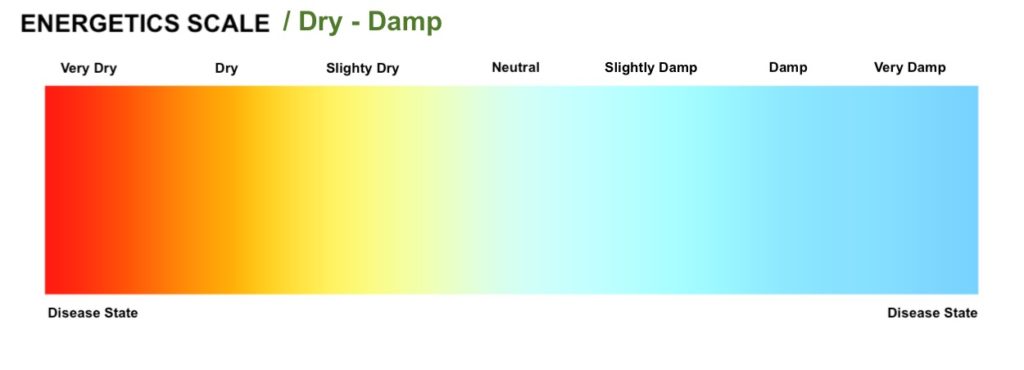
Dampness
Both hot and cold can have dryness and dampness. Dampness dilutes nutrients, decreases circulation, digestion, and lymphatic function. You’ll see excess mucus, phlegm, and an imbalanced water element causing stagnancy and accumulation of wastes. This process can cause high liver enzymes, arthritis, hots spots and yeast.
Excess moisture moves through the liver and pushes toxins to the periphery (skin). Significantly damp dogs get hot spots, itchy skin, and skin eruptions including sebaceous cysts and lipomas. Essentially the liver is eliminating through the skin verses the bowels and kidneys.
Damp Co-Factors
- lipoma
- lung congestion
- swellings
- cloudy urine
- water retention
- hot spots
- sebaceous cysts
- greasy skin
- arthritis
- zits on chin
- leaky gut, food sensitivities
- loose, stinky stool
- belching, acid reflux
- fungal infection
Examples of Herbs For Dampness:
- Nettles (neutral and drying)
- Skullcap (cool and drying)
- Hawthorn (cool and drying
- Dandelion (cool and drying)
- Rosemary (warm and drying)
Balancing Canine Energetics with Herbs, Formulas, and Foods
When looking at herbal remedies, do your research. Get to know the plant before using it on your dogs. Look at herbalist sites for more in-depth knowledge about plant energetics. When looking at formulas, you’ll want to know if it’s more predominantly warming, neutral, or cooling.
When looking at energetic food charts, know that there is much conflicting advice out there on what proteins are warming, neutral, or cooling. If you are looking at TCM (traditional Chinese medicine) charts know they have different meanings and organs systems than Western medicine or herbalism.
Here is my experience of common meat energetics from my practice:
- Beef/neutral
- Pork/cold
- Bison/neutral
- Turkey/slightly warming
- Chicken/warming
- Rabbit/neutral
- Salmon/warming
- Sardines/neutral
- Mackerel/neutral
- Cod/cooling
- Mussels/warming
- Venison/hot
- Lamb/hot
Remember, foods and herbs have an energetic range. For example, neutral foods can go either way towards slightly warm or slightly cool. It depends on your dog’s individual tolerance and physical condition.
Learning basic canine energetics helps you pick well-indicated herbal remedies. It also helps avoid the constant trial and error leading to frustration and the belief certain products just don’t work. If you’re working with a homeopathic formula, the energetics are mostly neutral.
When it comes to Adored Beast Apothecary products, here is a breakdown of their energetics:
- Turkey Tail Mushroom Complex/neutral
- Fido’s Flora/neutral
- Your Go 2/neutral
- Phytosynergy/neutral
- Love Bugs/neutral
- Liver Tonic/neutral
- Jump for Joints/neutral
- Healthy Gut/neutral
- Gut Soothe/cooling
- Anti-vaccinosis/neutral
- Gut Seal/neutral
- Easy Peesy I/neutral
- Easy Peesy II/cooling
- Yeasty Beast I/neutral
- Yeasty Beast II/cooling
Plants and dogs are individuals. Yes, this makes herbal learning more difficult. However, grasping this concept and embracing energetics and individualism will make you more confident and effective in your holistic health journey.

